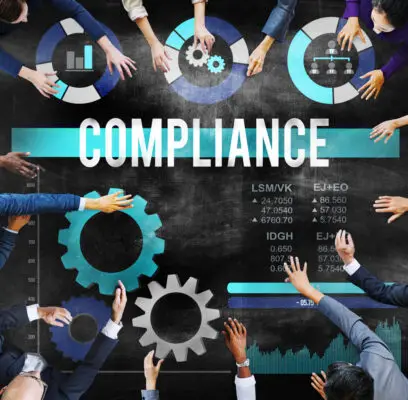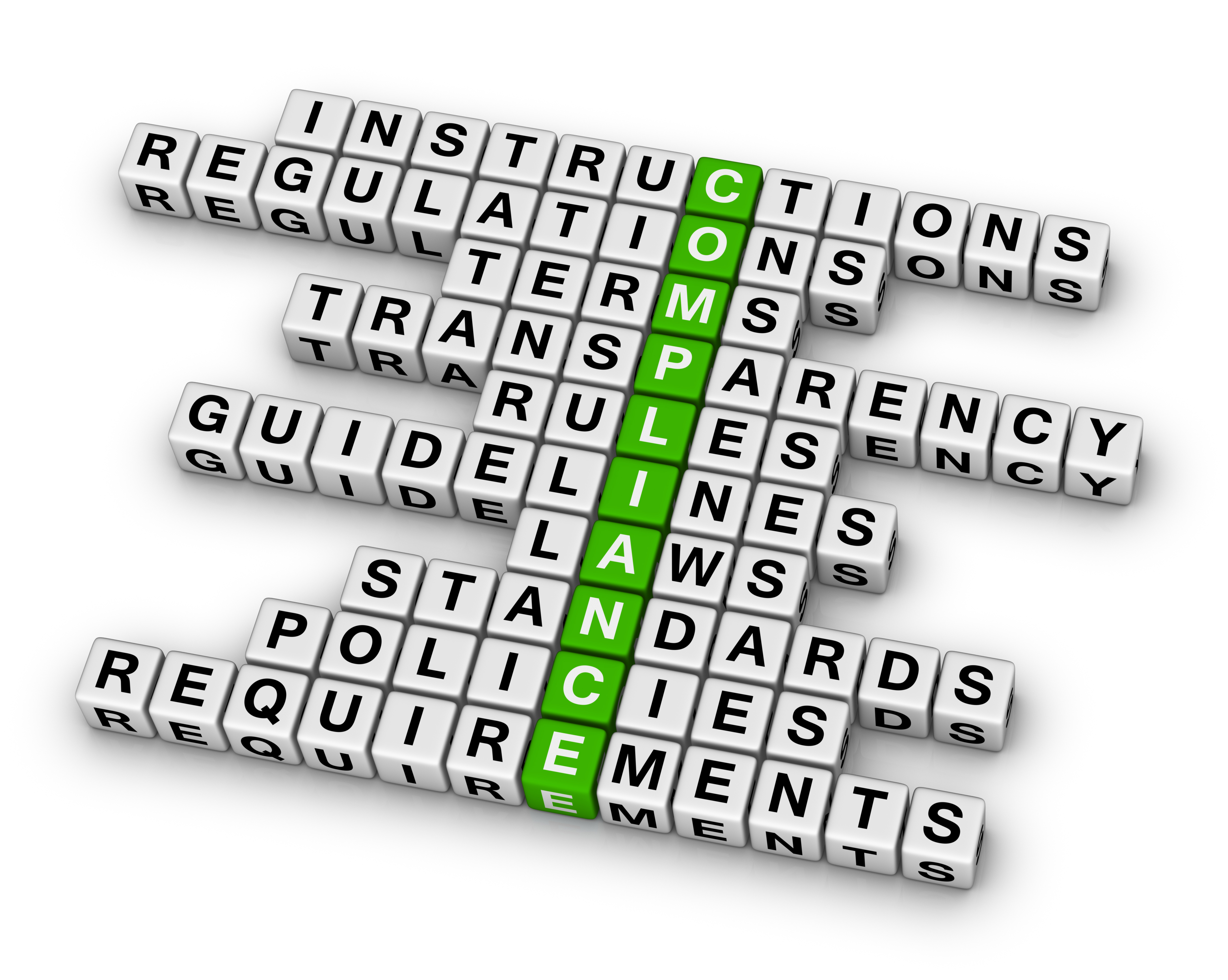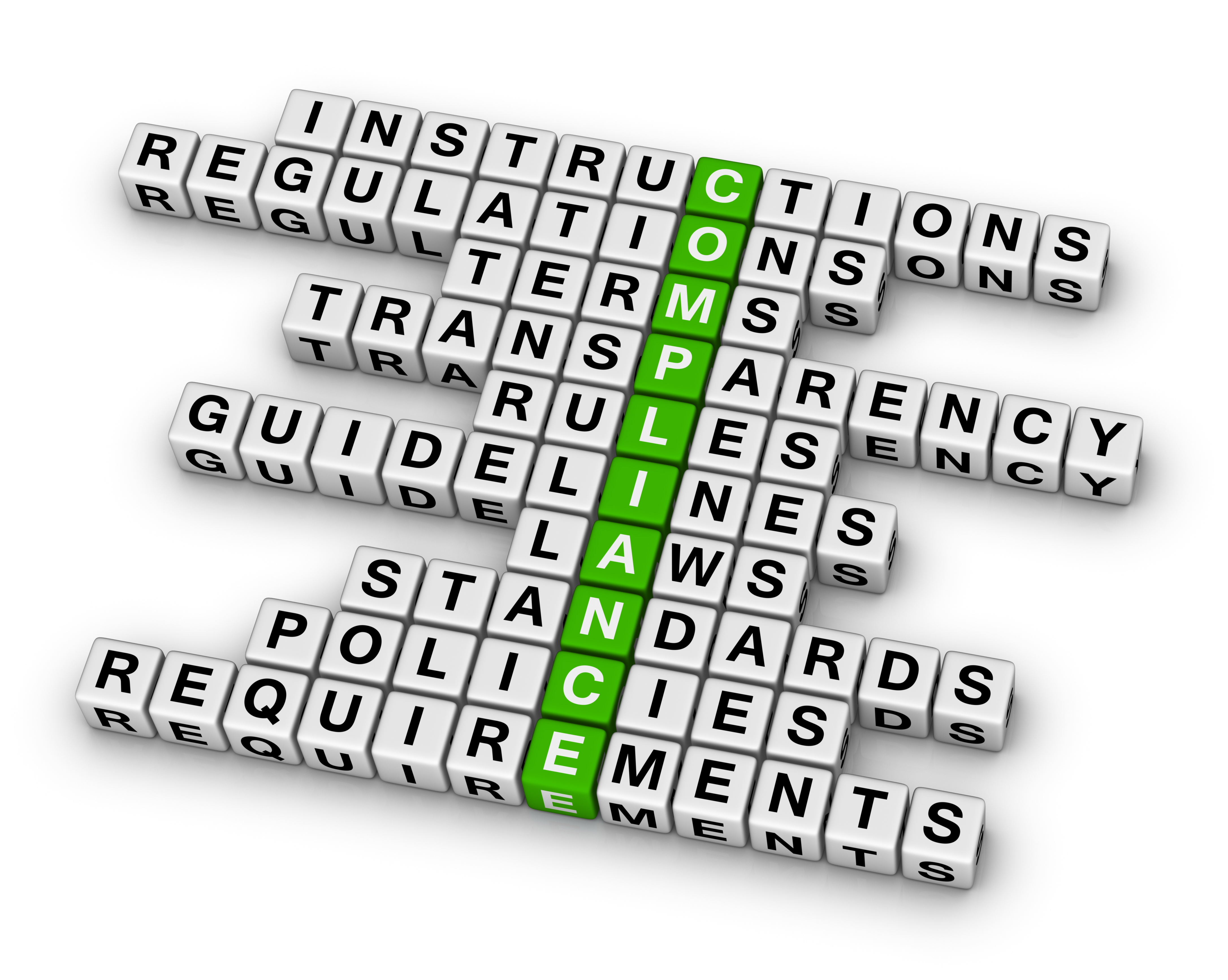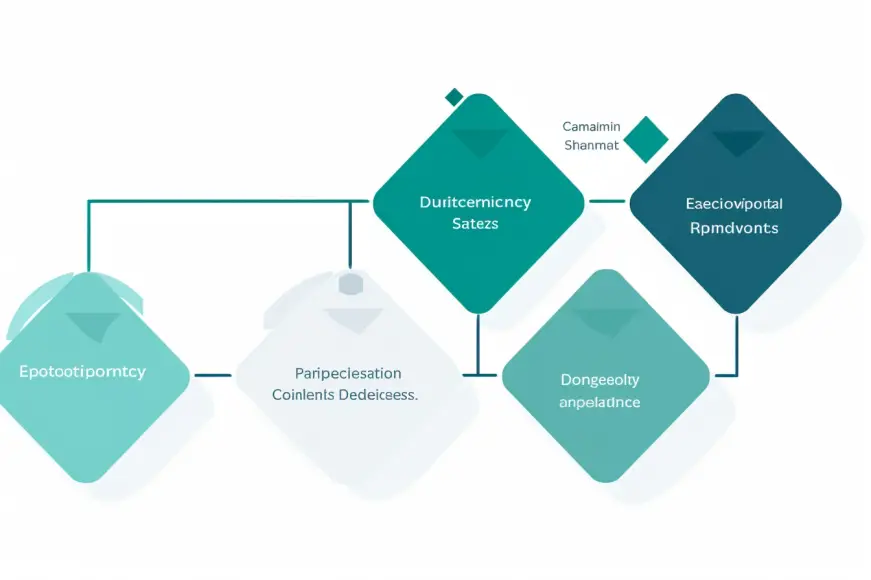Compliance risk refers to the potential for losses and legal penalties arising when a company fails to comply with laws, regulations, standards, or codes of conduct relevant to its business operations.
These risks can be broad and can come from different sources, such as:
Regulatory Risk: This is associated with failing to comply with industry-specific laws and regulations. For example, a healthcare provider could face penalties if it doesn’t comply with patient privacy regulations like the Health Insurance Portability and Accountability Act (HIPAA).
Legal Risk: This is the risk of lawsuits, financial losses, or damage to reputation due to violations of laws and regulations.
Reputational Risk: A failure to comply can damage a company’s reputation, leading to potential loss of customers or partners, decreased stock price, and overall erosion of trust in the brand.
Compliance risk can vary significantly based on the industry and geographic location of the business. For instance, a financial services company may face compliance risks related to anti-money laundering laws, privacy laws, and financial reporting standards.
In contrast, a manufacturing company might face significant compliance risks related to environmental regulations and occupational safety standards.
Managing compliance risk typically involves identifying applicable regulations, creating policies and procedures to ensure compliance, educating employees about these policies, and regularly reviewing and updating these measures to accommodate changes in the regulatory environment.
It also includes putting in place systems to detect potential violations and correct them as quickly as possible.
Compliance risk is a growing concern for businesses, as it can significantly impact a company’s financial security. Understanding compliance risk and how to mitigate it is essential to ensure that your business is appropriately managed and secure.
This article looks at compliance risk, how it affects businesses, examples of compliance risk, and strategies for mitigating it.

What Is Compliance Risk?
Compliance risk is the risk of legal or regulatory sanction, financial loss, or loss of reputation a company may face due to its failure to comply with laws, regulations, codes of conduct, or ethical standards.
It refers to the risk of non-compliance with internal and external regulations and laws. Compliance risks can be caused by various factors, such as inadequate or ineffective internal controls, inadequate training, a lack of awareness of applicable laws and regulations, or the failure to respond to changing regulations.
Compliance risks can also result from inadequate monitoring of third-party relationships and vendors and inadequate policy and procedure development. Organizations need a comprehensive compliance program to reduce non-compliance risk and potential penalties.
How Does Compliance Risk Affect Businesses?
From the potential for hefty fines for non-compliance to the loss of customers due to a lack of trust, businesses must be aware of the risks associated with not following industry regulations or standards. This could include anything from data privacy regulations to environmental standards.
Financial Penalties: Failure to comply with regulations can lead to substantial fines and penalties. These can vary depending on the regulation and the severity of the violation, but in some cases can amount to millions or even billions of dollars.
Legal Consequences: Non-compliance can also result in legal action, leading to additional financial penalties, injunctions, or even criminal charges against the company or its executives.
Reputational Damage: Compliance violations can severely damage a company’s reputation. Customers, investors, and other stakeholders may lose trust in the company, leading to loss of business, decreased stock price, and long-term financial impact.
Operational Disruptions: Compliance violations can sometimes lead to operational disruptions. For example, a company might be barred from certain activities until it can demonstrate compliance or must make significant changes to its operations to comply with regulations.
Increased Scrutiny: A company with compliance violations may face increased scrutiny from regulators, leading to more frequent audits and inspections, increased reporting requirements, and other regulatory burdens.
Loss of Business Opportunities: Companies that fail to manage compliance risk may lose business opportunities. For example, other companies may be reluctant to partner with or invest in a company with a history of compliance violations.
Decreased Employee Morale: Compliance issues can also affect employee morale and productivity. Employees may feel demoralized or uncertain about job security if the company faces legal or regulatory problems.
Effective compliance risk management can help avoid these impacts. This includes staying up-to-date with all relevant regulations, implementing strong compliance policies and procedures, providing regular compliance training for employees, and actively monitoring for potential violations.
Compliance risk can also lead to reputational damage for businesses, as customers may no longer trust a company that is not compliant with regulations. This can lead to a loss of customers, which can severely impact a company’s bottom line.
Examples of Compliance Risk
Examples of compliance risks are financial risks, such as failing to meet reporting standards or adhering to Generally Accepted Accounting Principles (GAAP), or operational risks, such as ensuring employees follow safety protocols.
Financial Services: Financial institutions face compliance risk with laws like the Dodd-Frank Act in the U.S. or the Financial Services and Markets Act in the UK. These laws set forth a wide range of regulations on financial activities. Non-compliance could lead to substantial penalties. Another example is non-compliance with anti-money laundering (AML) laws and regulations, which can also lead to significant fines.
Healthcare: In the healthcare industry, non-compliance with patient privacy laws, such as the Health Insurance Portability and Accountability Act (HIPAA) in the U.S., can lead to severe penalties. Drug manufacturers must also comply with regulations from entities like the U.S. Food and Drug Administration (FDA) or the European Medicines Agency (EMA).
Technology and Data Privacy: Companies that handle personal data must comply with data protection and privacy laws such as the EU’s General Data Protection Regulation (GDPR) or the California Consumer Privacy Act (CCPA) in California, USA. Violations can lead to hefty fines.
Environment: Companies, particularly in industries like manufacturing, oil and gas, and mining, face compliance risk related to environmental regulations. Non-compliance with regulations like the Clean Air Act or Clean Water Act can result in substantial fines and other penalties.
Labor and Employment: Non-compliance with labor laws and regulations, such as Fair Labor Standards Act (FLSA) in the U.S., which includes rules about minimum wage, overtime, and child labor, can lead to legal action and fines.
Import and Export: Companies involved in international trade must comply with various import and export laws and regulations. For instance, non-compliance with U.S. export controls could lead to penalties or loss of export privileges.
Compliance risks can include legal risks, such as failing to adhere to applicable laws and regulations. Businesses must also consider the risk of reputational damage if their practices are deemed unethical or not in compliance with industry standards.
Businesses must also be aware of the risk of non-compliance with their own internal policies. This includes ensuring all employees follow company policies, procedures, and guidelines.
Companies must also comply with applicable laws and regulations, including anti-corruption, privacy, and environmental laws.
Non-compliance with these laws can result in hefty fines or even criminal prosecution.

Mitigation Strategies for Compliance Risk
Gaining control of compliance risks is essential for businesses to remain successful. Taking proactive steps to mitigate these risks can help you protect and grow your business.
Understand Applicable Laws and Regulations: The first step in managing compliance risk is understanding the laws and regulations applicable to your business. This includes not only national laws but also regional and local laws, as well as industry-specific regulations.
Implement Strong Internal Policies and Controls: Your organization should have clear, well-documented policies and procedures that reflect compliance requirements. These policies should be regularly updated to reflect any changes in laws or regulations.
Regular Training and Education: Regular training and education are crucial to ensure that all employees understand the compliance requirements and the importance of adhering to them. Training should be tailored to the specific needs and roles of different groups of employees.
Use Technology Tools: Various software tools and technologies can help manage compliance risk. For example, data analytics tools can help identify potential compliance issues, and automated systems can ensure compliance procedures are consistently followed.
Regular Audits and Monitoring: Regular audits and ongoing monitoring can help detect potential compliance issues early to address them before they become significant problems. Both internal and external audits can be useful.
Open Communication Channels: Create open channels of communication where employees can report potential compliance issues without fear of retaliation. This can help detect issues that might otherwise go unnoticed.
Engage with Regulators: Building a positive relationship with regulatory bodies can help ensure that your organization is up-to-date with the latest regulations and that you understand how they apply to your business.
Response Plan: Plan to respond to compliance issues when they arise. This should include steps to address the immediate issue and plans to analyze what led to the issue and how similar issues can be prevented in the future.
One of the best ways to manage compliance risk is to create clear policies and procedures that are regularly updated and communicated to all employees. These policies should detail the potential consequences of non-compliance and how to follow the regulations correctly.
It’s also essential to create a culture of compliance within the organization by providing regular training sessions and setting a good example for employees.
Regularly auditing and monitoring processes is another essential way to manage compliance risk. This involves reviewing existing policies and procedures to ensure they are accurate and up-to-date and conducting periodic checks to ensure employees follow the regulations.
Additionally, companies should invest in programs that detect potential compliance risks and prudent management before they become serious issues.
Steps to Reduce Compliance Risk
Taking proactive steps to reduce compliance risk is essential for businesses to stay ahead of potential issues and remain successful. One of the most important steps is determining the compliance requirements and ensuring they’re consistently followed.
Identify Compliance Obligations: Understand the regulatory landscape relevant to your organization. This will depend on your industry, the regions in which you operate, and other specifics of your business. Regularly monitor for changes in laws, regulations, and industry standards.
Develop Comprehensive Policies and Procedures: Once you understand your compliance obligations, develop detailed policies and procedures that align with these regulations. Ensure these policies are easily accessible and understandable by all employees.
Establish a Compliance Program: A compliance program provides structure and support for your organization’s compliance efforts. This typically includes a designated compliance officer or team, formal training, and education programs, regular audits and assessments, and procedures for reporting and addressing compliance issues.
Train Employees Regularly: Regular training ensures all employees understand their compliance responsibilities. This training should be tailored to the needs of different roles and departments and should be updated as regulations or business practices change.
Implement Strong Internal Controls: Controls are procedures that ensure your policies are being followed. This could include approvals for certain types of transactions, segregation of duties to prevent fraud, or automated checks within IT systems.
Monitor and Audit: Regular monitoring and auditing can identify potential compliance issues before they become serious problems. This includes both internal audits and external audits, where appropriate.
Promote a Culture of Compliance: Foster a culture that values ethical behavior and adherence to regulations. This can be supported through communication from leadership, recognition of compliant behavior, and a clear policy that there will be no retaliation for reporting potential compliance issues.
Create a Response Plan: Have a plan in place to address any compliance issues that arise. This should include procedures for investigating the issue, addressing the immediate problem, and making any necessary changes to prevent similar issues in the future.
This means understanding applicable laws and regulations and training employees on appropriate compliance procedures. Additionally, reviewing these requirements regularly and updating them to remain compliant is essential.
Another important step in reducing compliance risk is establishing a system of checks and balances. This includes having regular internal audits to ensure all policies are followed and implementing systems that prevent improper activities.

Conclusion
In conclusion, compliance risk is crucial for any business, spanning all industries. This risk encapsulates the potential financial, operational, and reputational threats a business can encounter from not adhering to relevant laws, regulations, industry standards, or internal policies.
With the consequences of non-compliance ranging from significant fines to reputational damage and operational disruptions, a proactive approach to managing compliance risk is not just recommended—it’s essential.
Navigating the ever-changing landscape of regulations requires businesses to stay informed about their specific compliance obligations, develop comprehensive policies and procedures, and foster a culture that values compliance.
Integrating ongoing training, regular auditing, and constant monitoring into your organization’s strategy is vital, ensuring that compliance is deeply ingrained in your business’s operations.
Remember, effective compliance management goes beyond just avoiding penalties. It’s about cultivating an organization that operates ethically, transparently, and responsibly—a goal that can enhance trust, drive customer loyalty, and ultimately contribute to sustainable business success. The task may be complex, but the reward is a resilient, reputable, and responsible business ready to face future challenges.

Chris Ekai is a Risk Management expert with over 10 years of experience in the field. He has a Master’s(MSc) degree in Risk Management from University of Portsmouth and is a CPA and Finance professional. He currently works as a Content Manager at Risk Publishing, writing about Enterprise Risk Management, Business Continuity Management and Project Management.

